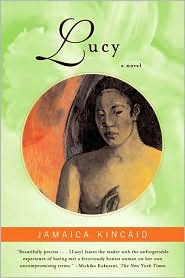After completing the play Translations, it got me really wondering to what happened to Yolland. It is interesting that he suddenly disappears after he shares a romantic evening with Maire. It makes me think of Romeo and Juliet. Maire seems to know that he will return and where he will return. This is like the idea Juliet has to return to Romeo after faking her own death. In the end of that play though there is definitive knowledge to what happens to the couple: they die. But here the ending is left purposely ambiguous to what will happen to everyone in the play.
I think that this would be a good piece for the creative writing assignment. Writing a play is difficult because it involves much more dialogue between characters and stage directions, but I also think that they are a bit more fun. Having written screenplays before to add a different ending to a book or play, I know that they are hard work but they also allow for more creativity. Stage directions allow for the setting to be incorporated into the storyline without sounding awkward like some other creative stories may have it seem with random descriptions throughout. They also allow for the reader to describe how they picture the characters in their own mind. I think it would be nice for a creative writing assignment for students to write what they think happens at the end of the play.
Monday, April 27, 2009
Wednesday, April 22, 2009
English vs Irish

After reading the first Act of Translations, I was reminded of the cruelties that the English have imposed on the Irish after taking Ireland as a part of their empire.
"And from the very first day you go, you'll not hear one word of Irish spoken. You'll be taught to speak English and every subject will be taught through English and everyone'll end up cute as the Buncrana people." Bridget says on page 19.
This quote reminded me of a film from my childhood called "The Secret of Roan Inish. In one scene a boy is beaten for speaking Gaelic in school where he should be speaking English.
The bad sentiment between the English and Irish is beginning because of the enforcement of English culture on the Irish by language. In Frank McCourt's memoir Angela's Ashes he describes dislike towards the English at a young age. McCourt was taught at a young age that the English were evil while the Irish were good. McCourt goes on to believe that the English are the cause of all of the sufferings for the Irish people.
I think that this play will have a similar turn between the Irish and English people.
Thursday, April 16, 2009
The end of innocence
I thought it was very interesting that Omishto seems to feel that she no longer needs her family or her house. She was changed by the storm and the hunt that followed, but on page 151 it is solidified that she is no longer a part of her home. She even believes that she no longer needs it. It is also sad that her mother does not think she will be returning after she goes to see the elders. Omishto and her mother no longer seem to belong to one another. It seems to be an even deeper separation than Omishto's struggle between the modern and Taiga ways. Omishto no longer needs her family or her mother to take care of her anymore. This seems to be turning into a coming of age novel, like Lucy. Lucy did not need her family or anyone else in her life, just herself. And it seems Omishto is headed in the same direction as Lucy.
Thursday, April 2, 2009
Cover Art

Cover Art is very influential to a novel. I remember talking about the original cover of The Great Gatsby thoroughly in my English class before reading the novel. F. Scott Fitzgerald had actually been inspired by this piece of art, and integrated it into the story of The Great Gatsby.
So cover art is not totally separate from the novel itself. The cover of Lucy also seems to tell you about the story itself. A young woman is on the cover, and it is clear that she has darker skin and darker hair. This young woman could be Lucy who is from the West Indies, and I believe that it is her. Also, the woman does not appear to be wearing anything to cover her torso. I think that this follows the story because Lucy is constantly narratin
 g about sexual encounters. Also, the woman may not be wearing anything because she is still finding where she fits in life, so she may be unsure of how to appear to others. The cover also includes a large area of red and orange. The color is fiery, and Lucy has strong emotions and a fiery personality. Lucy also has a very unstable relationship with her mother, and is constantly angry with her. Red is often a color associated with anger, so I believe it is fitting Lucy would appear with a lot of red. There is also an area of dark blue on the cover. This could represent Lucy's sadness she has for leaving behind her innocence by having to grow up so fast. It may also represent her sadness that she is still mourning the loss of her mother's total love and affection to her brothers.
g about sexual encounters. Also, the woman may not be wearing anything because she is still finding where she fits in life, so she may be unsure of how to appear to others. The cover also includes a large area of red and orange. The color is fiery, and Lucy has strong emotions and a fiery personality. Lucy also has a very unstable relationship with her mother, and is constantly angry with her. Red is often a color associated with anger, so I believe it is fitting Lucy would appear with a lot of red. There is also an area of dark blue on the cover. This could represent Lucy's sadness she has for leaving behind her innocence by having to grow up so fast. It may also represent her sadness that she is still mourning the loss of her mother's total love and affection to her brothers.
Tuesday, March 24, 2009
Like Me But Kinda Different
After reading Jhumpa Lahiri's story "This Blessed House," it got me wondering how two such different people could be attracted to one another. Sanjeev and Twinkle seem to be different in many ways, except that they share the same culture and religion. But even that is different, because Sanjeev has lived in Connecticut while Twinkle has only just moved there after living in California. Their age difference may play a role into why they act differently to situations, but overall their personalities are different. In contrast, the couple Douglas and Nora are almost the same person it seems when they are introduced. They even dress the same, and act very similarly. So it seems interesting that sometimes people pick their mates because they are just like them while others pick their mates because they are totally different. It seems though that either way can work out or not work out. Being in a relationship with someone who has the same interests as you allows you to do things that you both enjoy together. But being in a relationship with someone who has different interests than you can allow you to be introduced to new things that you may start to enjoy. And if it wasn't for that person's introducing you to those activities then you may have never found your enjoyment for those things. In one of my English classes in high school we were reading Tamim Ansary's memoir West of Kabul, East of New York. Ansary was born and raised in Afghanistan and many of his family members were married to their cousins. My English teacher was explaining to us that people like others who are like them but slightly different, and that cousins fit this category nicely because they come from similar backgrounds but are still slightly different. So overall I think that the two extremes that Lahiri shows us in couples work, but the true solution is finding a relationship with someone who "is like me but kinda different." You get the best of both, sharing interests but also learning of new things.
Saturday, March 7, 2009
O
The film "O" has a striking similarity to Othello, but it also very different. The film does offer a modern view of how Othello could happen. It was interesting that they chose the setting to be in a high-school. In a high-school, people tend to know other people's business through the gossip network and there are also many different cliques. I thought that this fit well for the setting, since it showed how Odin could believe Hugo's lies about Desi. It also showed how Odin didn't really fit into the rest of the groups, because he was not like everyone else. One difference that I didn't really like was that Odin died outside, and not in Desi's room. Seeing Othello die with Desdemona next to him shows their emotional attachment that Othello at the very least had here, but having Odin die outside showed how truly alone he was in his world.
Thursday, February 26, 2009
Blackface

Since we have seen the different film adaptations of Othello, I was particularly disturbed by the Laurence Olivier in blackface. Even with the black makeup, you could still tell that he was a white man. It seemed very insulting to see Othello played in such a way. In my history class we watched clips from an old film on the rise of the KKK, and some actors were also in blackface. It really highlighted the discrimination towards black people. It was very insulting to not only see the way that they presented these people in blackface but also the way that they were presented in the film did not show that they were thought of as being equal to the white Americans. The film adaptation of Othello that we watched in class used a black actor for the role of Othello and seemed much more authentic. There are racist remarks used against Othello in the play, but presenting a white actor in blackface makes the racism much more apparent. It makes it seem as if black actors are not thought of as qualifying for the role of Othello, which is the role of a black man. I'm interested to see how the film "O" is going to present the play in a modern adaptation.
Subscribe to:
Posts (Atom)